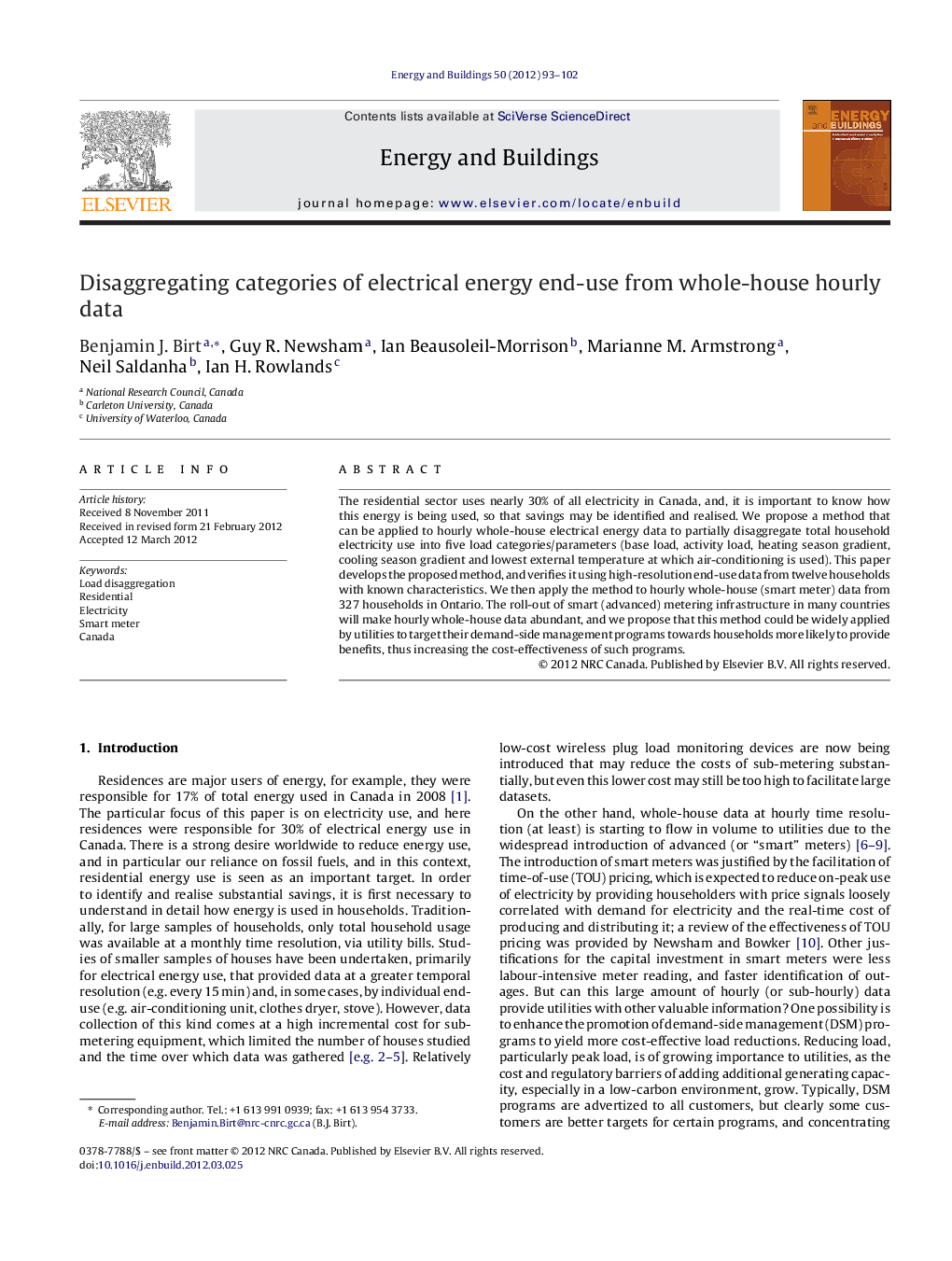| Article ID | Journal | Published Year | Pages | File Type |
|---|---|---|---|---|
| 263750 | Energy and Buildings | 2012 | 10 Pages |
The residential sector uses nearly 30% of all electricity in Canada, and, it is important to know how this energy is being used, so that savings may be identified and realised. We propose a method that can be applied to hourly whole-house electrical energy data to partially disaggregate total household electricity use into five load categories/parameters (base load, activity load, heating season gradient, cooling season gradient and lowest external temperature at which air-conditioning is used). This paper develops the proposed method, and verifies it using high-resolution end-use data from twelve households with known characteristics. We then apply the method to hourly whole-house (smart meter) data from 327 households in Ontario. The roll-out of smart (advanced) metering infrastructure in many countries will make hourly whole-house data abundant, and we propose that this method could be widely applied by utilities to target their demand-side management programs towards households more likely to provide benefits, thus increasing the cost-effectiveness of such programs.
► Method developed to disaggregate total hourly household electrical load into categories. ► Method tested on sub-metered households to check results against known values. ► Method used on a large data set of smart meter data, and range of results shown. ► Possible uses of method for targeting of utility DSM programs are discussed.
